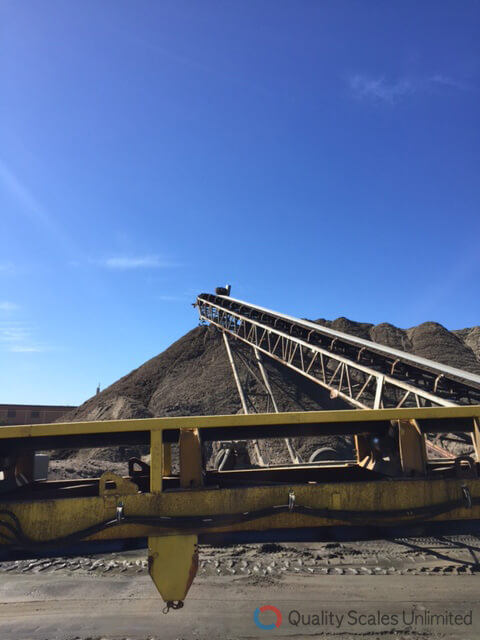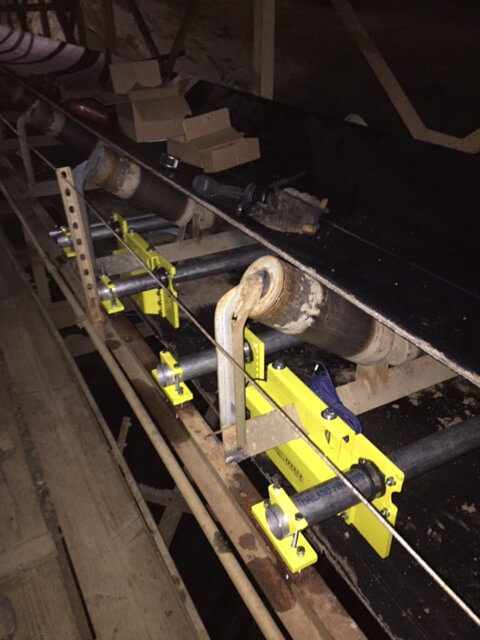
Calibration is a process that determines the statistical relationship between an observed output of a particular measurement system, and the value of the measured characteristic, based on reference standards. The importance of a calibration schedule is to ensure that the required accuracy is maintained while at the same time minimizing the scale calibrating costs.
This article will discuss calibration for your balances and conveyor belt scales.
Balances
So, when and why should you calibrate your balance?
If you use your balance, then calibration is a requirement. Many people think that calibration is not required for their new balance. If you read your balance operator’s manual, you will find that calibration is necessary, even before the first use.
Reasons why your new balance needs to be calibrated
The shipping process can cause significant changes in the mechanics of your balance. Interestingly, the changes, as small as they may seem, can cause big discrepancies in your measurement results. When the barometric pressure varies, it affects the results you get from your scale. The same applies if the location in which you are using your balance has a different gravitational force from that of the factory that manufactured your balance. Your scale service provider can calibrate your balance to ensure accurate product weights as well as the certificate of calibration.
Types of balance calibration
Some scales come equipped with a motorized internal calibration. Internal calibration is relatively simple, but the initial scale cost may be greater. In addition to the internal calibration, most scales can also accommodate external calibration. To perform external calibration your scale service provider will use determined certified weights to set your scale’s parameters so that your weighing results remain consistent and accurate.
Location
Since the gravitational force is not uniform everywhere on the earth, there are always some slight differences. The differences depend on a particular location’s altitude in relation to the sea level. If a particular balance is moved to an area where the force is greater or less, you should expect it to display different values.
Note that different balances react differently to location changes. A more sensitive laboratory balance, could exhibit gravitational force differences causing substantial changes to the balance’s calibration due to a small difference in location. On the other hand, a less sensitive balance may not have weigh changes in gravity when moved to different locations.
Regular calibration is imperative in the sense that you acquire knowledge and an understanding of how your balance works. You can, therefore, confirm whether there have been alterations of the scale that could create doubt about the measurements. You also become aware of the uncertainties that could be presented by your scale.
Conveyor Belt Scales

How often do you calibrate your conveyor belt scale?
The intervals at which you calibrate your conveyor belt are a delicate balance between risk and cost. The period between calibrations should be after reasonable amount of usage in order to lower the risk of questionable product measurements.
Where do you start?
You need to consider the condition of the conveyor when determining the intervals at which to calibrate your belt scale. It is not possible to predict the size of the error margin for a particular conveyor. And for this reason, it is wise to begin doing the calibrations after short intervals of continuous use.
Conveyor belt care during weather changes
Temperature changes cause a belt to be either short or long, and this is especially evident during summer and winter. The changes in length consequently affect the tension of the belt, and ultimately alter the accuracy.
You can use a gravity tensioning device and set the belt as loose as possible to minimize the effects of wide temperature changes. The precautions are paramount, but for each season, you may need to perform additional calibrations.
Conveyor maintenance
It’s always best to calibrate the scale after maintenance to the conveyor. During maintenance, the conveyor may encounter some errors thus causing accuracy issues on the scale. Some of the maintenance processes that cause changes in the zero calibration are:
- Changing the belt speed
- Adjusting the tracking or gravity take up
- Replacing or lubricating an idler
Quality Scales Unlimited is an established scale service provider offering round the clock calibration and repair services in California and Nevada. For reliable and timely calibration service, call our experienced and licensed technicians at 800.722.5301.




